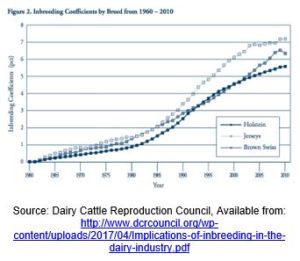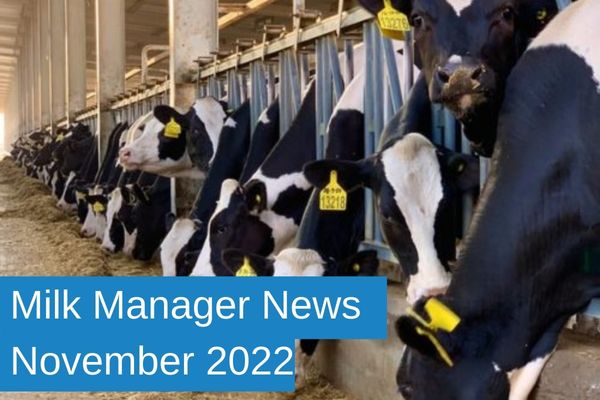Milk Manager News November 2022 – Mating Programs for Breed Improvement
14 November 2022Twenty-five years ago, the average size of the dairy herd in the UK was around 70 cows, and back then most farmers would know each individual animal inside and out, from their temperament and milking speed to the sires and dams within their pedigrees. There would usually be one person who made all the breeding decisions, and they had a limited selection of bulls to choose from. Nowadays, however, the average herd has more than doubled in size, the list of bulls to choose from is endless, and the task of selecting the ideal sire for each cow can be both time-consuming and challenging.
Computer mating programs assist with allocating sires, providing a list of mating recommendations that can be followed by anyone involved with breeding the cows, saving time and reducing operator error. The programs are usually customisable, allowing the user to ‘design’ the ideal cow to suit their management system and production goals. Breeding to a set model can help achieve uniformity within the herd, making managing the herd easier whilst enabling the cows to perform to their genetic potential.
Protecting Against Inbreeding
The priority for most mating programs will be to minimise the risks associated with inbreeding. Considered to be one of the largest ‘hidden’ costs to dairy producers, inbreeding reduces productivity and lifespan and can lead to pregnancy losses and birth defects. Research suggests that every 1% increase in inbreeding results in a loss of 34kg of milk per lactation. A safe level of inbreeding is considered to be below 6.25%. Pedigree data is used to calculate the inbreeding coefficient of each mating. The more data that is provided, the more accurate the inbreeding coefficient is likely to be. The increase in inbreeding coefficients over time are shown in the following graph.
Achieving Production Goals
Milk recording and production data for each individual animal will be taken into consideration when influencing mating recommendations. Where production data is not provided (i.e., for maiden heifers) then production estimates will be made based on the animal’s pedigree.
A Cow to Fit the System
Cow conformation can also be factored into the mating recommendations. Some programs take into consideration more linear traits than others, and some focus only on improving the cow’s most undesirable traits. The cow’s linear scores will be taken from classification results, or scores obtained from an evaluator. The ideal linear score and the amount of emphasis placed on each individual trait will depend on the ‘type’ of animal that the farmer is aiming to develop. For example, the program may put more emphasis on chest width when focusing on animals bred for an extensive system, than it would for an intensive system. A stature score of 8 may be more desirable in a show cow, compared to a score of 6 for a commercial cow.
Genomic Testing
When genomic test results are provided, they will typically override all other data. The phenotype of each animal (the traits the animal displays) is greatly influenced by its environment. The genotype, or genetic potential of the animal, may have been suppressed under certain circumstances and will not necessarily reflect the traits which will be passed on to the next generation. Inbreeding-derived problems such as haplotypes and recessives can also be detected in genomic evaluations. Calculating the genomic PLI of each animal can help prioritise those to be bred to high-value bulls/sexed semen, allowing those ranked lower in the herd to be bred to beef.
marcus.fox@sac.co.uk; 01539 889990
Sign up to the FAS newsletter
Receive updates on news, events and publications from Scotland’s Farm Advisory Service


